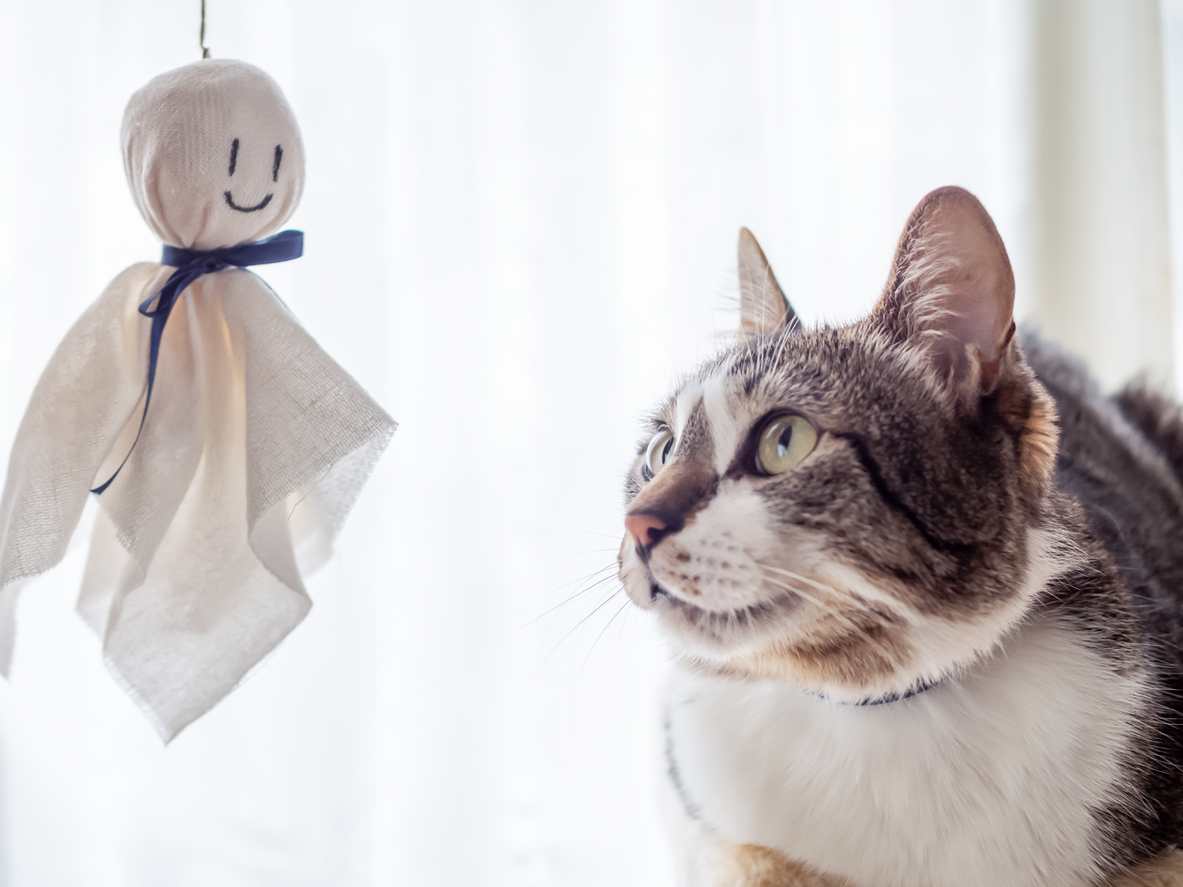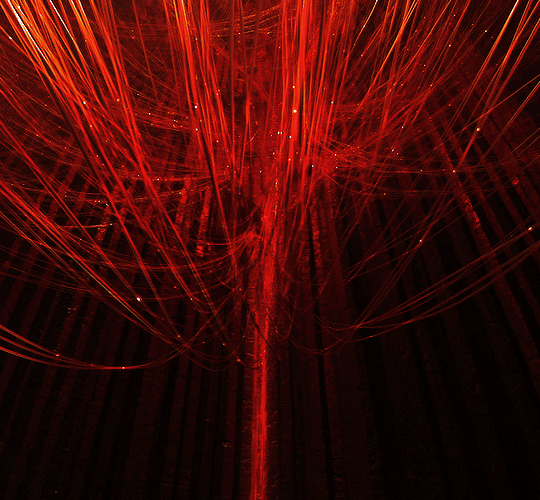 Why Not: Watching Dramas With Low Ratings
Why Not: Watching Dramas With Low Ratings
 |
"Myths are a part of every culture in the world and are used to explain natural phenomena, where a people came from and how their civilization developed, and why things happen as they do. At their most basic level, myths comfort by giving a sense of order and meaning to what can sometimes seem a chaotic world." [1]
As someone who grew up hearing tales of gods and demons, of legends and mythological creatures, myths do provide me with a sense of comfort only few other things can. Sitting by the legs of my grandparents, listening as they recounted countless stories of gods and heroes, I was transported to another world – and those experiences really shaped me. Even as an adult, I still very much love and find comfort in those wondrous tales.
Hello everyone, and welcome to my article on the Myths and Legends of Asia. In this piece, I'm going to take you all through a few mythological tales, legends, and folklores of Asia. So sit back, relax and enjoy.
 Before we get to the actual content, I feel it's important to mention that I am not a mythologist or a folklorist, I am simply someone who enjoys learning and reading about history, mythology and legends. The tales recounted here are based on the dramas I've watched and/or the research I've conducted. In regards to the dramas mentioned in the article, some descriptions may seem like mild spoilers, but I've ensured that it's nothing major, and that it's only related to the myths and legends being discussed. |
 |
Once upon a time, the world was divided into the mortal realm (on the west) and the celestial realm (on the east) by a heavenly body of water known as the Silver River.
A young, orphaned cowherd (also referred to as Niu Lang) lived on the west bank, and one day, he witnessed seven maidens descending onto the mortal realm. As they conversed, he began to listen in on their conversation and sighed that he would love the company of another, as he had been alone his entire life.
Much to his surprise, an old ox he had with him as his sole companion, began to speak, stating that the seven maidens were the daughters of the Lord of Heaven (in some versions Queen Mother of Heaven), and that to return to heaven, each of them must don a special coat that permits them to travel between the realms. The ox, who was once part of the heavenly abode and knew much of its workings, decided to help the poor cowherd on account of witnessing his kind and resilient nature, and told him to take one of the coats.
Back in the celestial realm, the Lord of Heaven who was displeased with this union, recalled his daughter, and unable to resist his command, she left behind her family, deeply saddened.
Witnessing this, the ox spoke to the Cowherd again. He told him that a pair of boots made out of his hide would help the family of three enter heaven and reunite with their mother and wife, and that the Cowherd should feel no remorse for taking the hide since his time in the mortal realm was coming to an end. Following these instructions, the Cowherd then picked up his children and went after his wife, but the heavens were still disapproving of the pair.
To prevent them from entering, it is said that the gods caused the Silver River to swell, but at this impasse, a flock of ten thousand magpies formed a bridge across the river to provide passage for the family.
As the Cowherd reached heaven, the gods relented ever so slightly, allowing the lovers to meet, but for just one day a year, the seventh eve of the seventh lunar month. On this day, the family was allowed to see each other on the bridge of magpies across the Silver River.
"It's a story of impossible love. It's a classic story." – Never Let Me Go (2022) |
Today, celebrated as the Far Eastern equivalent of Valentine's Day, this day is known as Qīxì (China and Taiwan), Chilseok (Korea) and Tanabata (Japan).[2][3]
This is one of the most common folktales I've come across in dramas – the story of The Cowherd and the Weaver Girl. It's been in more than at least five dramas I've watched, with several variations in the story, yes, but in some form or another. The point of reference they usually make is that of star crossed lovers, two individuals destined to be together but kept apart by people or circumstances.
A few dramas use this tale as a way to bring the leads closer while also subtly indicating that there are trials they may have to face. A good example would be Love In Translation, where the leads, Yang and Phumjai, go on a mock-up date to prepare Phumjai for his real date with Tammy, an influencer he has a crush on. During the date, Yang gives Phumjai a pair of necklaces with tiny magpie pendants as a gift to give Tammy on Qīxì. This couple necklace plays a role in their story further ahead, but it's not the main focus of the series. |  |
 | In other series' like Chains of Heart, the folktale plays a much bigger, yet subtle role. Without giving much away about the plot, Chains of Heart has the overarching theme of losing your lover due to unfortunate incidents and circumstances. There are several symbolic representations of the separated lovers throughout the series, and if we look closely enough, the parallels can be made. |
However, the most apt drama in terms of The Cowherd and the Weaver Girl would be Never Let Me Go. It's incredible because not only do they reference the story in the drama, but the entire story of Never Let Me Go feels like a reference to The Cowherd and the Weaver Girl. Neungdiao, the son of a huge conglomerate, and Palm, the son of the bodyguard of the conglomerate, fall in love after Palm is assigned to be Diao's bodyguard. Throughout the series, there's always a sense of danger following them – a sense of disapproval and opposition. Despite all this, they're determined to stay together, and they even refer to themselves as the characters from the tale. They even have a secret location for just the two of them! It's not a bridge, but it is truly theirs.
 |  |
 |  |
 |  |
Truth be told, despite being featured heavily in dramas aplenty, this still remains one of my favorite folktales. There's something about two people willing to fight for each other against the world, isn't there?
 |
Let's move onto a legend that leans a bit more towards horror, full of love and heartbreak nonetheless.
Mae Nak Phra Kanong (also known as Mae Nak or Nang Nak) is the most well-known Thai horror story around the world. Set in the Rattanakosin era (18th century), the folktale recounts the story of Mae Nak. The folklore states that Nak and her husband Mak lived along the Phra Kanong canal and were deeply in love. While she was pregnant, Mak was conscripted into the army and sent to war, leaving her and their unborn child behind. As Mak sustained wounds in the battlefield, Nak died during childbirth. But because of her love for her husband, her spirit was bound to her past life, staying on in Phra Kanong, awaiting Mak's return.
When Mak returned after being treated for his injuries, he was welcomed home by Nak and their newborn. The villagers, knowing the truth, tried to warn Mak but he dismissed them angrily as rumors.
One day, while cooking, Nak accidentally dropped a lemon from her porch and used her powers to stretch her arm straight to the ground to pick it up. Unbeknownst to her, Mak, who had gone out to run some errands, returned at that very moment. Horrified and afraid by what he witnessed, he ran away to hide, first amongst Blumea leaves (according to Thai folklore, ghosts are afraid of the Blumea plant) and then in a temple.
As Nak then terrorized the villagers in her fury and heartbreak, she was confronted by the revered monk Somdej Phra Buddhacarya. He calmly reasoned with her, and helped her move on from her past pains, and later cremated her, then carved out a piece of her forehead to create an amulet. Other versions of the story state that she was exorcized instead, first into a jar and then into the waistband of a monk, which is said to be in the possession of the Thai Royal Family.[4][5][6]
Because of the immense popularity of the folktale, the story of Mae Nak is one of the most highly adapted subjects in Thailand, spanning over 5 movies and 9 dramas (as listed on MDL's Mae Nak Phra Kanong page). The very first one came out in 1936, and there's another adaptation on the way as well! While most of the adaptations focus on either the horror aspect or the romance aspect based on the MDL tags (I don't think I could watch all of them, lol, I'm sorry), there was one that caught my eye. One that had the comedy tag. So I decided I would watch Thailand's highest-grossing film, Pee Mak. And let me just say, I loved it. I'm not the biggest fan of horror, but if it's got comedy, I consider giving it a try. It reminded me of quite a few films I watched growing up, and it was an eventful two or so hours. And if you're thinking you've read about the legend so what's different, then I'll just say I read up on the legend before I started it, and I witnessed something entirely different to what I expected. The plot of the movie is, of course, the legend of Mae Nak, but there were certain aspects of it, the comedy for example, that were definitely an innovative and fresh touch. |  |
The story of Mae Nak quickly became one of my favorites, simply because it isn't a one dimensional tale, it's a story of love and devotion, and even though the legend seems slightly grim, watching the movie gave me perspectives that made me appreciate this even more.
 |
This is a legend that seems innocent enough, but has quite the terrifying beginnings.
Teru teru bōzu, or Sao Qing Niang, is a small figurine hung on the edge of a roof to wish for a sunny day.
The legend of Sao Qing Niang (Sao - sweep, Qing - sunny, Niang - woman) goes that during the Heian period in China, during a time of heavy rainfall, a young sweeper girl was sacrificed to symbolically indicate her sweeping the clouds away in heaven, thus keeping the rain away. To remember her, people then made cutouts resembling the young girl and hung them outside in hopes of good weather.
The legend of Teru teru bōzu speaks of a monk rather than a young girl. The monk in reference was a 'good weather monk', who, back in feudal Japan, promised a village plagued by bad weather that he would stop the rains and save their farmlands. When he failed to do so, the feudal lord ordered the monk to be decapitated and that his head be wrapped around a white cloth and hung outside to wish for good weather.
The term teru teru bōzu (literal meaning shine, shine monk) also finds itself a part of Japanese nursery rhyme, which was popularized in 1921. The song asks Teru teru bōzu to bring good weather, with a promise of sake if it happens, and if not, its head will be chopped off.
 |
It is, however, interesting to note how differently the two dramas I've witnessed this legend in have used them.
The Spirealm (tags: Mystery, Horror, Comedy, Fantasy) made use of the origin story of the practice, in a plot point very intricately connected to the legend. That was already a mild spoiler so I won't say more, but in an almost converse manner, Taikan Yoho (tags: Romance, Drama) leaned towards using the practice as an important plotline to further the relationship between the leads. The details are.. risqué.. to say the least, but important to the plot progression.
 |
Interestingly enough, the first time I heard about the so-called "Sunny Doll" wasn't in either of the dramas I mentioned here, it was in an episode of Ninja Hattori-kun, which I loved as a kid (and still do). You never know where it can come from, is what I'm saying.
Anyways.. let's move ahead to one of my favorite legends, the story of competition and rivalry of thousands of years..
 |
(Note: This section contains spoilers for The Sign, but I've split the sections by a picture, so if you're interested in the legend but haven't watched the series and are interested in doing so, skip the portion after the picture.)
This is a tale of a centuries-long rivalry that stemmed from familial ties. Garuda and the Nagas are some of the most revered mythological figures in several Asian cultures, often worshiped as deities and heroes.
According to Hindu mythology, Garuda and the Nagas were born to two sisters who married the same sage. They were each granted a wish, and the first sister, Kadru, asked for a thousand children, whereas the second sister, Vinata, asked for two children – each of them equal to Kadru's thousand children. Soon enough, the women gave birth to eggs containing their children, and as time went by, Kadru's thousand eggs hatched, and the Nagas emerged. When Vinata's eggs showed no signs of hatching, she broke one open, eager to meet her child. A half-formed Aruna emerged from the egg and chided his mother for her impatience. Cursing her to a life of servitude and urging her to stay patient with the other egg, he disappeared to become the Sun god's charioteer. Vinata waited years, and finally Garuda emerged.
Later, Vinata lost a bet to Kadru and was bound to her as a servant. Garuda, eager to rescue his mother, asked his siblings, the Nagas, to aid him on his quest. The Nagas in turn, asked him to bring them the nectar of the gods, a drink that grants one immortality. Garuda immediately took up the task, and after an arduous journey, returned with the nectar. It was at the time that the king of the Devas, Indra, requested that Garuda not hand over the nectar to the Nagas, as that would lead to trouble. Thus, they came up with a plan. Once his mother was freed, Garuda placed the nectar before them and asked the Nagas to purify themselves before they consumed it. Meanwhile, the jar containing the nectar was taken back to the heavens, and Garuda devoured the returning Nagas.
Thus began the centuries-long rivalry between Garuda and the Nagas. Although they may be enemies, there is no notion of good/evil between them, neither side is associated with either word. [9][10]
 |
(Spoilers for The Sign after this point)
This is the myth that inspired this entire article, so thank you to The Sign. One of my favorites too, because I grew up listening to stories about them. Not this story in particular though, there are various other legends about these figures that are prevalent in many ancient texts. Imagine my joy and surprise when I came across them in dramaland.
The Sign actually has some of the best world-building I've seen, they took so many traits about these mythological creatures and seamlessly transferred them into the script. Small details at first, and then progressing to the actual story. I won't spoil what parts of the myth they used or what the story was in the series, but I was just a little star struck. And details really do make or break a story, so here come some small spoilers.
Nagas are beings of the water and earth, whereas Garudas are of the air. This aspect is very well incorporated into the story, when we see that Tharn, who is the reincarnation of a Naga is extremely comfortable around water, but Phaya, the reincarnation of Garuda, has had traumatic experiences involving water since his childhood. |  |
 | The show also features the Wat Tham Si Mongkhon in Nong Khai, home to Tham Phaya Nak or cave of the Naga Serpent, which was used to travel to and from Badal, the mystical home of the Nagas. The scene it's featured in has some interesting history, and a small tidbit of reference to the leads.[11] |
Another small feature was the depiction of the Naga Fireballs, a phenomenon of the Mekong River that is said to be caused by the Nagas dwelling in the waters. During this scene, the Naga statue at the temple and the fireballs have a significant effect on Phaya, but no one else, as he is the reincarnation of the mortal enemy of the Nagas. |  |
The individual legends of each of these creatures themselves span lengths, and so does their combined history. A myth rich in characters, stories and relationships, it is truly grand.
 |
Fate.. Destiny.. Soulmates..
Sounds like something out of one of our favourite dramas, but turns out there's an interesting and extremely romantic legend behind these words.
 |  |
This is the legend of the Old Man under the Moon (also known as Yue Lau) and his Red Thread of Fate. It is said that whenever he visits Earth, he shows people their future destined lovers, two individuals connected by his red string.
Once, when he visited Earth, a young boy came across him and the old man pointed at a young girl standing nearby and claimed that she would be his future wife. The embarrassed boy then threw a stone at the girl's head and ran away. Years later, the boy married a girl, and when it was time to lift her veil, he noticed that she had a scar in the exact same place where the young girl he encountered years ago was injured.
Similarly, a young man seeking a rich spouse asked the old man whom he would marry. The old man pointed to a poor old woman and a young woman accompanying her, and claimed that he would marry the girl. Disgusted and angered, the young man ordered that the two women be killed and left in a huff. Years later, he married a rich woman as he had wished, but he notices that she has a scar on her forehead. When asked about it, the woman replies that she and her grandmother were attacked for no reason when she was young, and he realizes she was the same girl from years ago. He apologized and she forgave him.
In a third story of similar fashion, a young girl confessed to a boy she loved, only to be rejected. She runs away and meets the old man, who shows her that she is still connected to the boy through the red thread of fate. Years later, she falls in love with a man who reciprocates her feelings. After they are married, the man tells her that he regrets rejecting a girl brutally when he was younger, and both of them realize who the other really is. He apologizes and she forgives him.
The Old Man under the Moon often visited the Earth, and each time he was there, he would show people their destined lovers. The thing is though, the thread may get tangled or stretched or damaged, but it will never break. This doesn't necessarily relate to just lovers, because soulmates aren't just love interests, right? The Red Thread of Fate connects you to someone who will be significant in your life, someone you will share a deep connection with.
There is an explanation as to why it is most associated with romance though, and that has to do with biology. The ulnar artery directly connects the heart and the pinkie finger, and with its discovery arose the belief that the hearts can be connected through pinkie fingers. This eventually led to the belief that the hearts of soulmates are connected to each other through a red string tied to the fingers.
Together with the romantic aspect of the legend, it is also rooted deep in the beliefs of several cultures, providing solace and fostering love on various levels.[12][13][14]
Dramas do tend to focus on the romance aspect (which I'm not complaining about, I'm discovering that I'm a sucker for the soulmates trope lol), and every example you take, it's about two people who are simply.. connected. You just can't break the connection. In a drama like You Make Me Dance, the red thread is used as a means to connect two characters who seemingly have nothing they could connect upon. An unlikely pairing, the more they discover about each other, the better the audience understands why these two were meant to connect. |  |
Another pair connected by the red thread is featured in Until We Meet Again. The couple here, Korn and Intouch, are aware that they are meant to be, but are nevertheless separated after a tragic series of events. When they get a second chance though, it isn't easy-going. Plagued by their memories and trauma, their invisible thread is tugged at and damaged, but it never breaks. |  |
Till We Meet Again definitely has one of the most interesting (albeit slightly confusing) interpretations of the legend though, in addition to having yet another reference to The Cowherd and the Weaver Girl. The story follows Yue Lao trying to find a new connection for the love of his life, and I'm still not sure I understood some parts of it. It truly must be witnessed to understand. |  |
Though each of the couples featured has their own dynamics, trials and endings, the one common factor is that they are all tied to each other by the red thread, and it never breaks.
 |
It feels like a crime to not include this section. The iconic 3G: Goblins (Dokkaebi), Gumihos (Nine-tailed fox) and Grim Reapers (Jeosung Saja). I've come across so many dramas with these characters as leads, support, and even guest roles! Truly iconic, that I couldn't end the article with any other mythological figures but them.
 |  |  |
Apparently though, not every Dokkaebi looks like Gong Yoo (which, okay, I'm not disappointed or anything, but yeah, okay...). Goblins rise from inanimate objects that have been stained with human blood and don't share any similarities with humans in terms of appearance. While there are several types of goblins, each with varying physical appearances and personality traits, all of them are said to look fearsome and strike terror in the hearts of those who look upon them. It is also said that they have only one leg, on the right side. Known to be skilled wrestlers, if one was to beat them, it is only possible to do so by exploiting their right side.
Despite this description of their physical attributes, they are known either to be harmless or quite mischievous. They are creatures who employ magical items to keep people happy, often playing pranks.[15][16] |  |
 | Gumihos or Nine-tailed foxes are also popular Korean mythological creatures. Similar in physical appearance to jiuweihus and kitsunes, the former is often depicted as an evil creature, hungry for human flesh, whereas the latter two are associated with good omens. Gumihos often take on the form of beautiful women to seduce men and lure them to their death, but it is said that if the creature is able to stay away from flesh for a thousand days, they can remain in their human form. Gumihos also possess a bead imbued with powers, if slipped into the mouth and retrieved by the gumiho during a kiss, the energy of the victim is absorbed by the gumiho. If instead the human swallows the bead, they gain knowledge or powers.[17] |
It's weird how you can connect Lee Dong Wook with any of the three mythological creatures I've mentioned in this section. Fascinating. The Grim Reaper is one of the most common characters across various mythologies. Although each mythology may have its own version, varying from the rest in physical appearances, personality, nomenclature and more, they are often individuals who are tasked with guiding those who have recently passed to the afterlife. The Jeosung Saja, or the Korean Grim Reaper, traditionally dressed in a black hanbok and hat, is one of the most feared figures in Korean mythology. |  |
Now, while it is hard for me to create parallels between these creatures and the dramas they've featured in, because I haven't watched a few of them (it's on my list, I just have to be in the mood to watch it, I promise I'll watch it!), and in other cases like Tomorrow, saying anything more than what's in the description would be a spoiler, I'll just keep it short instead.
Even without having watched Guardian: The Lonely and Great God, I know how iconic that tunnel scene is, or how iconic the OST is. More importantly, the fact that there continue to be dramas and movies based upon these creatures says that they play an important role in the history and beliefs of the nation (or nations) of their origin. In fact, every single myth and legend I've discussed in the article holds great importance in the respective cultures.
And just like that, we're back at the beginning, talking about how myths provide us with a sense of comfort and belonging. It's something that brings me happiness and a sense of togetherness, and I hope this article did the same for you.
Well, that's it, folks! I hope everyone enjoyed reading this article, forgive me for the length, I know it's very long, so thank you for putting up with me. I hope you enjoyed reading about the legends and learning more about some of your favorite characters or dramas.
If you've got a story, whether it's a myth or your own experiences and memories about discovering myths, leave a comment and I'll give it a read! After all, we could all use some comfort. ♡
 |
Sources: [1],[2],[3],[4],[5],[6],[7],[8],[9],[10],[11],[12],[13],[14],[15],[16],[17]. Image Credits: All banners and the cover image were self made. The image of Naga was self-captured and the rest of the images are linked to their sources. A big thank you to the editors. | Edited by: Tine (first editor) |














